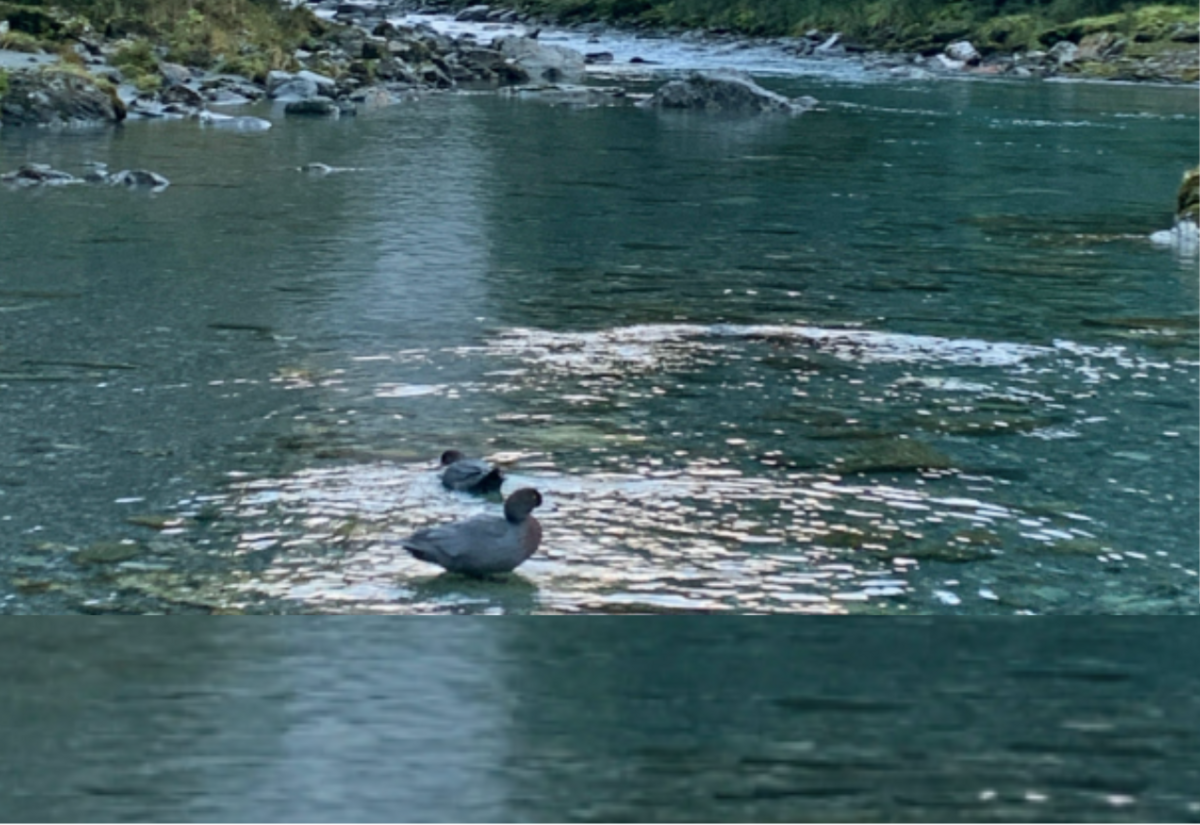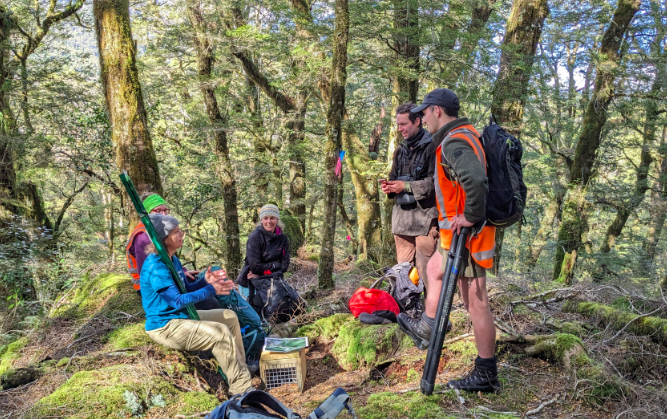Whio sightings ‘wonderful reward’ for conservation work

06 February 2025, 4:04 PM
 A recent whio sighting at the Blue River.
A recent whio sighting at the Blue River.A collective predator control effort around Makarora over the past 15 months has helped to reduce stoat and rat numbers - a positive sign for native birds in the area.
The efforts by conservation groups Southern Lakes Sanctuary, Department of Conservation (DOC), and Forest and Bird Central Otago have curbed the ‘rat plague’ of the 2023/24 summer.
They installed over 700 bait stations, serviced more than 1,400 traps, and DOC undertook a 1080 drop across the wider Makarora area.
Much to the delight of all involved, a family of endangered whio (blue duck) with five youngsters has been observed on the southern end of the Young River over recent months.
Southern Lakes Sanctuary project director Paul Kavanagh says the whio sighting is excellent news following the localised conservation work.
“[It] is an optimistic sign that indicates good stoat control in the area, which comes down to the great collaborative effort last summer,” he said.
“These endemic manu (birds) nest on the banks of rivers, in caves or in dense vegetation, and nesting whio are very vulnerable to stoats.”
Central Otago Lakes Forest and Bird chairman Andrew Penniket said extensive trapping is one of the factors for the increased presence of the birds.
“The sightings are a wonderful reward, coinciding with the work undertaken to put an extra 20 traps into the southern end of the Young River, specifically for the protection of rock wren and whio,” he said.
“It has been heartening that we have had very low catch rates of rats and stoats on all our trapping lines. It is probably the lowest ever, that I can recall.”

A mutli-organisation predator control effort has reduced pest numbers and protected native birds around Makarora.
In the summer of 2023/24 rat numbers exploded due to a ‘mast season’ of native beech trees, where a larger number of tree seeds are produced. A mast season generally occurs every two to six years and results in a dramatic increase in rat numbers, and then stoats.
The collaborative predator control effort has achieved positive results for other species in the area.
“We were concerned about the survival of the endangered mohua (yellowhead) with the siege of rats swarming to the area last spring and summer,” Paul said.
“However, in the core trapping and bait station areas, most of the mohua chicks that we have monitored have survived in both this year's and last year’s breeding seasons."
He said the survival of mohua and whio show “the power of working together [including] the amazing efforts of volunteers and staff, who strapped on their tramping boots and frequently checked and cleared thousands of traps and bait stations”.
“Collectively, they contributed thousands of hours towards this important mahi to protect wildlife in Makarora.”
PHOTOS: Supplied






